Kathie JenkinsMario MinichielloDéja Vue — Creating Room for Drawing |
|||||||
|
By choosing to use illustration to 'document' the life of Amsterdam's red light district, Mario Minichiello in many ways retraces the steps of those artists picturing the Parisian demi-monde of Montmartre and Pigalle some 130 years ago. For the Impressionist artists such subjects covered the cutting-edge of contemporary city life — the ultimate expression of the alienation and commodification that this urban 'modernity' generated.
'as the Parisian streets filled with prostitutes, so did French art and literature.'
(Hollis Clayton, Painted Love:Prostitution in French Art of the Impressionist Era, Yale University Press, p1) |
||||||
'There is no 'still' as these 'lives' unfold...' |
The conspicuous sexual commerce in the streets was the trademark of modern city life. The artist then, as visual commentator, was tied to the equally important need to generate new and direct technical and visual means, by which to communicate these ingredients of modernity. At the end of the 20th century Mario Minichiello was seated like his French counterparts earlier, with sketchbooks and pencils amongst the clients, prostitutes, and action of Amsterdam. But during the intervening century consumption has fueled our voyeuristic fascination and filled our urban spaces with hoardings manipulating the interplay of goods, desire and sexuality. This is a world where access comes through the 'lens' not the illustrator's pencil. The webcam and the Internet can provide 24 hour surveillance that confuses all public and private boundaries. Docu-dramas 'investigate' a menu of difficult, remote and invasive social material, and 'live' coverage relentlessly tracks olympiads and soldiers 'acting out' their lives before us. Given such saturation, what role, purpose or integrity lies in illustrative documentation of the sort found in Mario Minichiello's personal journals? Can the illustrator occupy a space that is different and valuable rather than anachronistic and indulgent?
If there is a special value it must lie in the sharing of such mediated and selective visions that such illustration affords. Like poetry they offer compressed and highlighted ingredients selected from occasions. The images, in that sense, are personal entry points that we can access, share and choose to explore. What they produce is simultaneously distillation and complexity. Mario Minichiello is not claiming to represent precisely what is before him. That is simply the starting point, which is then subject in turn to what he describes as 'layering' — the exchange that is generated in him by memory, prior experience, the notation of others and by the rapid social flux surrounding him.
| ||||||
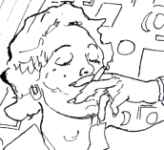 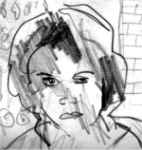 |
There is no 'still' as these 'lives' unfold; and there is no sense in trying to isolate the subjects from the means. The aesthetic dimensions — the actual quality of line, the urgency of the account, visible in the traces of graphite particles left on the surface of the paper, these are what confirm 'his' scene caught there and then on the pages of the sketchbooks. A communication of that tilt of the head, caught in a few fluid lines — that directness of exchange at the moment of viewing — that racy and humorous engagement with people and places — that starkness of people caught-up in their compulsions — that immediate physicality of a moment recording a familiar event. The unique dimension afforded by such illustration lies somewhere in the mix of accessing both the illustrator and the event. Mario Minichiello's sketchbook of Amsterdam, like those of Paris and New York, comes filled with latent narratives — some more obvious than others — and these belong strictly to the late 20thc. Communication starts with the act of drawing and that is our point of entry too. The sketchbooks carry the raw material, upon which he later works to produce the more formal illustrative expression of the exhibition pieces. In these his social reflections are aired and his anxieties become more visible, and so they belong with the strong socio-political themes of his commissions for the press. A body of powerful, stylized commentaries which serve to illuminate and shock us into response. The sketchbooks, free from commissioning briefs, engage a different visual language, one that speaks directly and intensely through visual notation. They bring us closest to that point of generating a human response and so offer quite different intimacies from those of the world of the 'lens'. |
||||||
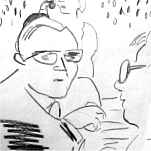 |
|||||||
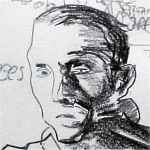 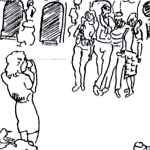 | |||||||
|
|
Kathie Jenkins September 2000 |